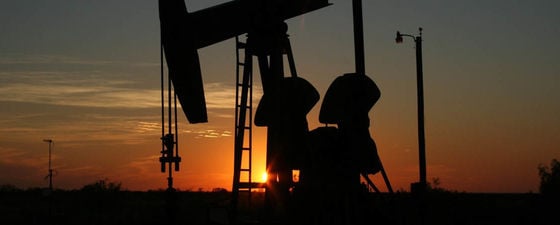Embracing the energy transition and improving the general perception and knowledge of the energy industry will help define the future of oil and gas.
World liquid fuels production and consumption balance. Source: Shot-Term Energy Outlook, February 2019. EIA.
How do you define the future of the oil and gas industry? This is a theme that is running through the session titles and plenary sessions of most industry conferences this year, including the International Petroleum Week in London in late February. It was the topic that two prestigious keynote industry speakers were asked to address as the event opened.
Their conclusions were very similar and centred on two subjects: the energy transition and the need for gas to (temporarily) take centre stage in this process; and improving the general public’s perception and knowledge of the industry.
Amin Nasser, President and CEO of Saudi Aramco. Source: Saudi Aramco.
As President and Chief Executive Officer of Saudi Aramco, Amin Nasser was invited to attend the recent World Economic Forum in Davos, where the theme of the meeting was ‘Safeguarding Our Planet’ – very pertinent to the energy industry. He found a confused world, where the fact that demand for oil and other petroleum liquids rose above 100 million barrels per day for the first time in October last year was being ignored by the majority.This was exemplified by one senior figure who told him that the oil industry would be dead in five years – based, it would appear, on the simple fact that there were more and more electric cars on the road.
Bob Dudley, BP’s Group Chief Executive, who also spoke at the introductory session at IP Week, similarly addressed the problems of perception that the oil and gas industry suffers from, pointing out that as we seem to live in a world “driven by myths, not facts”, this is a growing issue.
Bridging the Gap
Bob Dudley, Group Chief Executive of BP. Source: BP.
So how do we bridge this perception gap while working towards an effective transition to cleaner energy sources? These two senior oil men had some suggestions:
We must clearly explain how we see a future with a plentiful supply of affordable cleaner energy, but at the same time we have to reduce expectations; this cannot happen if we just stop pumping oil tomorrow.
There is a need to increase awareness of gas as a ‘bridging fuel’, particularly if used to replace coal in electricity generation. With India, for example, generating 75% of its grid electricity through coal, and Indian demand rising fast, any move towards gasification in that country alone would reduce emissions dramatically.
Energy demand growth is almost entirely driven by countries with emerging economies; how can we lower emissions and yet still provide people in these countries with the healthier, more comfortable lifestyles they aspire to?
The connection between oil and gas and ‘the things we like’, such as air conditioning and mobile devices, should be more transparent.
To alter perceptions of this as a dirty and dangerous industry we must continue to improve our health and safety record. As Bob Dudley pointed out, in 2017, 33 people were killed working in the oil industry; less than any previous year, but still 33 people too many.
Similarly, we need to continue to gain a social licence to operate, improving localisation and diversity.
Facts and logic need to trump myths surrounding things like hydraulic fracturing and peak oil.
Keep improving efficiency; we have already made huge strides in this area – by the time energy requirement doubles from today’s level, energy demand is expected to be only 20% higher than today – but there is still room for improvement. Simultaneously, we must let the outside world know about this more efficient industry.
There is a need to improve the carbon footprint of our operations, including reducing methane and other leaks.
Accelerate CCS capability and effective carbon pricing mechanisms and show industry support for these strategies.
Both speakers stressed the need for the industry to be open and engaged, listening to stakeholders, governments and the public and explaining how we are making the investment in the energy transition, but stressing that it takes time
The final call from these two senior industry figures was to us all, to tell everyone what a great industry we work in. A shared challenge.
Further Reading on the Future of Oil and Gas Exploration and Production
Some recommended GEO ExPro articles related to, or similar in content to, the future of oil and gas.
What Does the Future Hold for Oil and Gas?
GEO ExPro
As a founder of E&P intelligence company Drillinginfo and with a wide range of experience in the industry, Allen Gilmer is uniquely qualified to predict future oil and gas trends.
This article appeared in Vol. 15, No. 6 – 2019
The Hydrocarbon Exploration and Production Industry in 2019
Jane Whaley
According to analysts Rystad Energy, 2018 was the best year for hydrocarbon discoveries since 2015. Our Editor in Chief asks whether this, coupled with the expansion of exploration budgets, means the oil and gas industry is nearly back on track for more stabilised success.
This article appeared in January, 2019
A Road Map for the Future of Geoscience
Jane Whaley
The world is changing, and the energy industry needs to change with it. Q&A with Max Brouwers, VP Europe, Russia and Caspian for Shell.
This article appeared in August, 2018




